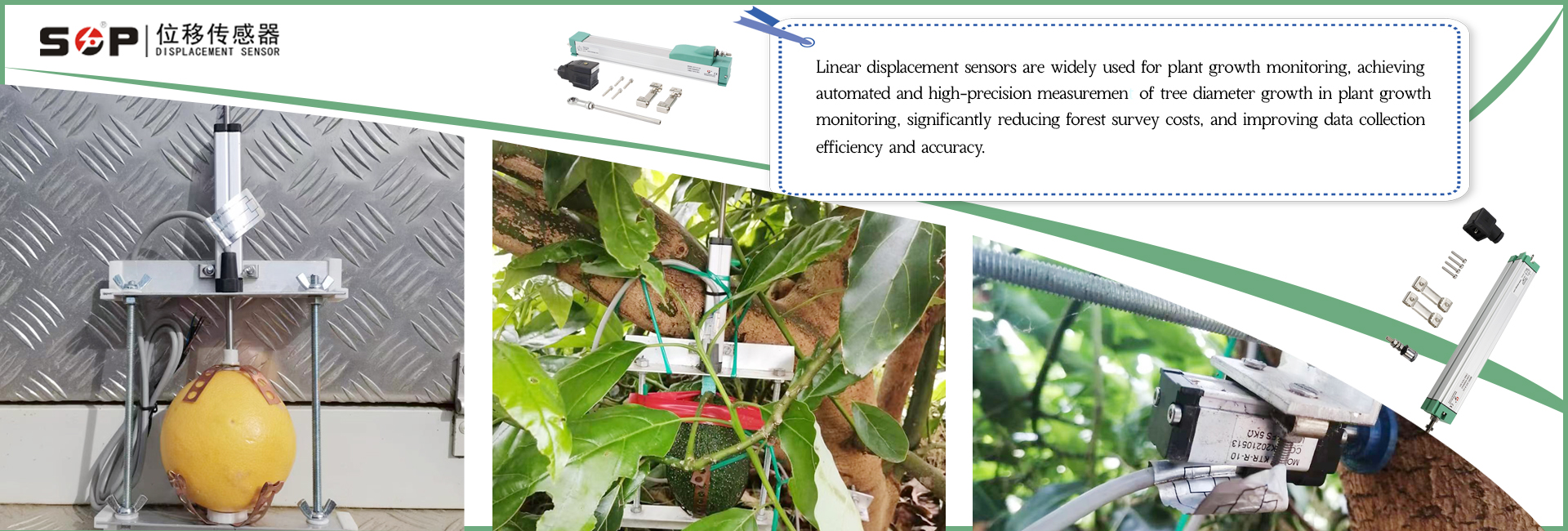Application of Linear Displacement Sensor in Plant Growth Monitoring
Application of Linear Displacement Sensor in Plant Growth Monitoring
Plant growth detection is an important task in fields such as ecology, forestry, and agricultural technology. In order to accurately grasp the growth laws of plants, understand their growth mechanisms, and provide scientific basis for plant cultivation and agricultural management, the application of modern technological means such as linear displacement sensors is particularly important. The application case of linear displacement sensor in plant growth detection demonstrates its advantages of high precision, reliability, and automated measurement.
Linear displacement sensor is a high-precision measuring device that can measure the change of an object relative to a reference point in the horizontal or vertical direction. Its working principle is based on different physical effects, such as potentiometer principle, resistance change, etc., which can record the displacement changes of objects in real time and accurately. In plant growth detection, linear displacement sensors are mainly used to measure growth parameters such as diameter at breast height, height, and fruit size of trees, crops, and other plants.
The application process of linear displacement sensors in plant growth monitoring is as follows:
Data collection: Linear displacement sensors are installed at the breast height position of trees to measure and record small changes in tree diameter in real time. The analog signal output by the sensor can be stored.
Data analysis: By using supporting software, data is imported into a computer to generate charts or continuous curve graphs, displaying the growth trend and periodic pattern of tree diameter. These data can be used to study the effects of factors such as soil, rainfall, fertilization, pests and diseases on tree growth.
The use of linear displacement sensors has achieved automated and high-precision measurement of tree diameter growth, significantly reducing forest survey costs and improving data collection efficiency and accuracy. By monitoring the growth changes of tree diameter over a long period of time, we can more accurately grasp the growth patterns of trees and provide scientific basis for forest ecosystem ecology or forestry management.
In addition to monitoring tree diameter growth, linear displacement sensors are also widely used in the growth detection of other plants. For example, in crop growth monitoring, linear displacement sensors can be used to measure changes in crop height to evaluate the growth rate and condition of crops. In addition, in fruit tree cultivation, linear displacement sensors can be used to monitor changes in fruit size, providing data support for fruit tree cultivation management and fruit picking.
The application of linear displacement sensors in plant growth detection demonstrates their advantages of high precision, reliability, and automated measurement. By monitoring the growth parameters of plants in real-time, the growth patterns of plants can be more accurately grasped, providing more scientific and efficient data support for fields such as plant cultivation, agricultural technology, and forestry management. With the continuous development of sensor technology and computer technology, the application prospects of linear displacement sensors in plant growth detection will be even broader.


